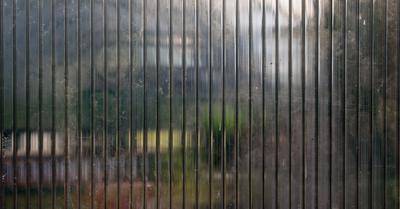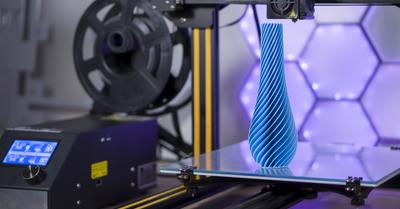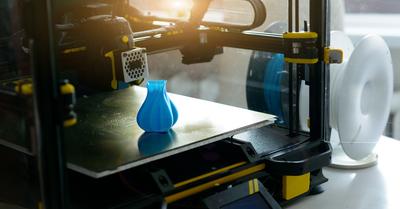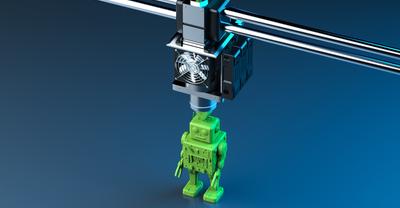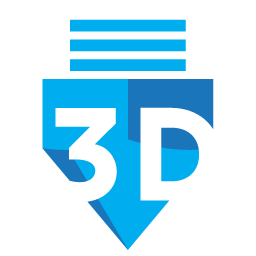The 3D Printing Processes
3D printing, also known as additive manufacturing, involves a series of processes as outlined below.
Stereolithography (SL)
SL is the first and most accurate process in additive manufacturing. It’s a laser-based process whereby laser beams react with photopolymer resins. The product then cures to form an accurate, specific part as directed from the STL file. The complex process involves the movement of photopolymer resins in a vat as directed in the X and Y axis the resin hardness with precision at points where the laser beams struck it.
After completion, it drops down in the Z axis. The process continues until all the data from the STL file is complete. Post processing procedures follow after curing and complete hardening of the resin.
Digital lighting process (DLP)
The DLP process is similar to the SL process but only differs in the light source. It uses conventional light sources like arc lamps and liquid crystal display panels. The light is passed on the entire vat surface of the photopolymer once, making the process quicker.
The laser sintering process that works with powder materials fuses with the particles into each other according to the 3D data of the STL file. This then forms a solid, and the process is repeated after the powder drops and rollers smooth it to allow the passage of the next laser beam.
The current and the previous layers formed are then fused together. Due to the high and precise temperatures required during the process, the build chamber is at all times sealed. After the process is complete, the whole powder bed is removed and excess powder removed. The sintering process is applicable to both metal and plastic materials.
The precision levels are similar, the curing and post processing as well. However, this process only requires shallow vats of resin.
Extrusion/FDM/FFF
Popularly known as Fused Deposition Modeling (FDM) because of its longevity. It works through 3D data supplied from the printer to melt plastic deposited through the heated extruder, a single layer each time. This then builds bonds and hardness on the previous layer of the build platform.
For any overhanging applications, the FDM requires support systems. The systems entail water-soluble materials for easy wash away after printing is complete. With the advancement in technology, dual and improved extrusion heads are available, which solves the limitations of entry level 3D FFF printers.
According to Scott, this method produces accurate models, and any problems or inaccuracies are corrected during post processing using acetone. The process may be slow in some geometrics and problematic due to layer-by-layer adhesion, which results in non-watertight models.
Inkjet
The inkjet utilizes two 3D printing processes, which are binder and material jetting.
Binder jetting
The process involves jetting a binder material and spraying it selectively into the powder bed so that it can fuse to create a layer of the required part. Similar to other systems, there is an incremental power bed drop and blade smoothing on completion before passing the next jets. The subsequent and previous layers also fuse, as is the case in other processes.
One major advantage is that it doesn’t need support like the SLS. Besides, it can be used in ceramics and food materials. The parts produced from such will require sintering to increase their durability.
Material jetting
This process involves jetting build materials in the molten or liquid state simultaneously through multiple jets. The materials are then cured with UV light after deposition of each layer.
The parts from this process are accurate, smooth, and possess different characteristics depending on the materials.
Selective Deposition Lamination (SDL)
The process builds each layer by standard copier papers, and each layer is attached to previous layers by adhesion. The adhesive is applied according to 3D data uploaded into the machine. The adhesion’s density is applied alternatively depending on the thickness of each part to ensure easy support removal.
After the addition of new sheets of paper to previous layers, it’s pushed up to the heat plate before applying pressure. The application of pressure ensures bonding between any two sheets. Tungsten carbide plates are afterward used to cut each plate along cut lines, each one at a time. The process goes on until the last sheet.
Electron Beam Melting (EBM)
The process is similar to the Direct Metal Laser Sintering (DMSL), with the heat source being the only difference. The electron beam, which is the heat source, requires the process to be carried out in a vacuum.
The process produces parts that are fully dense hence its use in production of medical implants and other hi-tech automotive and aerospace devices.
Applications of 3D Printing
There are a number of applications that require the precision that 3D printing offers. Below is an outline of the same.
Industrial Applications
The industrial applications that 3D printing is applicable to include apparel and 3D printed designer fashion dresses, shoes, and bikinis. Nike is a good example of a shoe company that utilized 3D printing. It's also popular in jewelry and customization of gifts.
Medical Applications
Bioprinting, medical implants, pharmaceutical formulations, and medical devices are some of the medical applications that use 3D technology because of the precision required in such devices and processes.
Manufacturing Applications
Additive manufacturing is applicable in rapid prototyping, rapid manufacturing, mass customization, and cloud-based 3D manufacturing are some of the common applications. It’s also useful in research to come up with specialized geometrics that assist in producing new compounds and chemicals.
Construction, Defense and Aerospace Applications
3D printing is the major way of fabricating construction components and buildings. This allows for more accuracy in complex constructions. In the aerospace and defense industries, additive manufacturing is important in weight reduction, material efficiency, and the precision required in making and operating complex military equipment.
The Materials Used in 3D Printing
3D printing uses a number of materials in its processes, including metals, plastics, powders, resins, carbon fiber, nitinol, paper, graphite & graphene.
Pros & Cons of 3D Printing
3D printing has a number of pros. Nevertheless, it has its constraints as well. Below is an outline of some of them. Most of them relate to the time required for the printing process, the cost involved, and printing designs.
Pros of 3D Printing
Quick Production of Prototypes
The 3D printing manufacturing process speeds up prototyping processes because it can manufacture several parts in hours, unlike machine prototyping. After the quick manufacture, there is ample type to modify the designs. All this at an efficient, cost-friendly, and timely manner.
Flexible Designs
The process serves as an alternative to remove restrictions arising from traditional processes. You can, therefore, design and print complex prints without much difficulty.
Cost-effective and Easily Accessible
Most service providers have embraced 3D printing, which has readily availed the printing services in most areas. However, this is not the case with traditional manufacturing processes that are only available in some countries.
Due to the ease of access, you cut costs related to transportation and imports. Besides cutting costs, 3D printing machines can do multiple processes, unlike the different machines that have to be used in traditional manufacturing processes. All this saves time, reduces costs, and minimizes wastes.
Strong and Light Parts
The materials 3D printing uses are light, especially plastics. Light metals are useful in industries that require such, like in the case of aerospace and automotive industries. The materials can be prototyped and fabricated to produce parts with high heat resistance, strength, and other desirable properties.
Minimal Wastes
The printing process does not use materials cut from non-recyclable raw materials, which leave behind a lot of unused waste materials. The materials in use are only those needed for specific parts.
Quick Productions and Designs
Due to the availability of virtual storage of designs in CAD and STL, the creation and production of designs is quick, and you can make a lot of productions within a few hours. However, in the case of traditional processes, it takes longer to mold and produce machined parts.
Eco Friendly
Besides the minimal amounts of waste produced from 3D printing, other beneficial factors to the environment include fuel efficiency and lightweight production industrial processes.
Cons of 3D Printing
3D printing has its set of constraints. Below are some which you should consider before considering it as an option.
Copyright Issues
The increase in popularity of 3D printing has led to a significant rise in counterfeit and fake products. This raises a lot of issues around the copyrights and quality of different products.
Reduction of Jobs
The use of automation in various 3D processes has diminished the need for human labor. This directly reduces the number of jobs in such industries and indirectly affects traditional manufacturing companies that are bound to adopt such technologies.
Material Limitations
The number of materials is limited to just a few that can be manipulated by temperature. Therefore, only a particular set and type of metals and plastics are applicable.
Post-processing
Post-processing procedures like polishing and removal of support materials slow down the production process. Some of the processes that take long include chemical soaking, heat drying and water jetting.
Size and Structure Restrictions
Most of the additive manufacturing chambers are small, thus restricting the size of productions. Larger sizes will have to be produced in different chambers, which is relatively costly. Design inaccuracies may arise from such, which may lead to other problems like delamination due to stress conditions.



